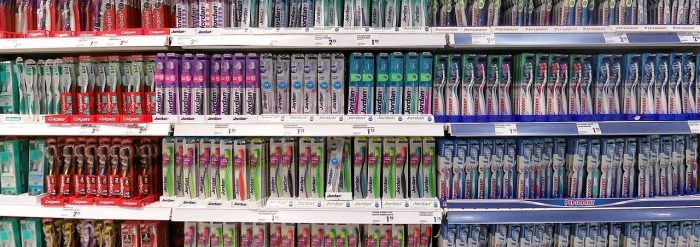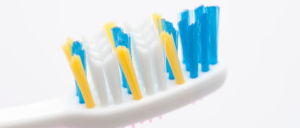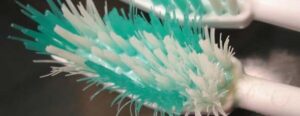
Ahh, perfect pearly whites. Since childhood it has always been a daily habit to brush my teeth. Two to three times a day, in fact! This healthy habit is ingrained in most people I know – it’s just something people do. If we forget, we’re horrified and run back to the bathroom to finish the job.
I was recently tasked with purchasing a new toothbrush (we always seemed to have a self-replenishing stash from the dentist) and was surprised at how many options were available. Some promise whiter teeth, superior handle ergonomics, better plaque removal, little soft plastic flaps between bristles, a tongue brush, with Disney’s “Frozen” characters on it…the options really are endless.
I also enjoyed the wide price ranges; you can buy a single manual toothbrush for anywhere from $2 to $15 (and probably higher, had I continued searching).
Obviously I now have questions!
Which toothbrush is right for me?
Okay, I know you’re asking “but this is a personal training blog. What in the world do toothbrushes have to do with personal training?” — great question and one I’m going to answer in a second blog on oral health and overall body health. But before I get ahead of myself, let’s talk tips.

Toothbrush tip #1: Soft Bristles

Choose a toothbrush with soft or extra soft bristles. Most people brush too vigorously and actually end up damaging their gums, roots and enamel.
If you have sensitivity to hot and cold foods or drinks, one contributing factor could be because you’re brushing too hard and/or the bristles are too hard – this can cause gum tissue to pull back (recede) from the teeth and result in root exposure.
Pro tip: If possible, look for bristles with rounded tips
Toothbrush tip #2: Regular Head Size
Bigger is not better! When it comes to the head of your toothbrush, you’re not going to save on time and efficiency in this realm – something too big will actually make it difficult to get those hard to reach areas like your back molars.
Especially if you have a gag-reflex.
Pro tip: Keep this one simple as most toothbrushes are designed with heads that are a half-inch wide and one-inch tall.
Toothbrush tip #3: Comfy Handle
Select a toothbrush handle that feels good in your hand. This might be difficult with everything in the packaging, but the price doesn’t change too much between products if it’s got a soft purple section on the plastic handle.
Pro tip: If you have joint pain, difficulty with grip (think carpal tunnel syndrome) or arthritis, then pay a bit more attention to the toothbrush handle. Non-slip rubber surfaces and comfort grips are great features to include in your choice.
Bonus Toothbrush tip #4: Replace it

The professionals at False Creek Dental echo the standard recommendation of changing your toothbrush every 3 to 4 months. “This is crucial for ensuring the bristles are capable of removing plaque and bacterial build-up on the teeth.”
So if you’re brushing your teeth in an attempt to keep your mouth clean, but are using a bacteria-laden instrument to do so, that’s food for thought.
When the bristles become frayed or worn the brush will be less effective. Also, due to moist conditions on the brush, bacteria has the ability to grow and multiply.
Tip: mark on your calendar or write on the toothbrush the 3rd or 4th month after you start using it as your reminder to pull out a new one, and retire that one to the cleaning drawer.
Since the average North American spends almost 1000 hours brushing teeth over a lifetime, it’s important to find a toothbrush that feels comfortable and works well. Soft bristles, regular head, comfy handle.
The best toothbrush is one THAT YOU’LL USE. A properly used $5 manual one will be superior to a $200 electric toothbrush that is used improperly or sits in the corner of your counter.
As for all those extra bits and bobbles and pearly white promises, if those aspects inspire you to enjoy brushing your teeth with more care and attention, then they’re worth the investment. Keep things simple and get a multi-pack once you settle on the ones you like the best.







